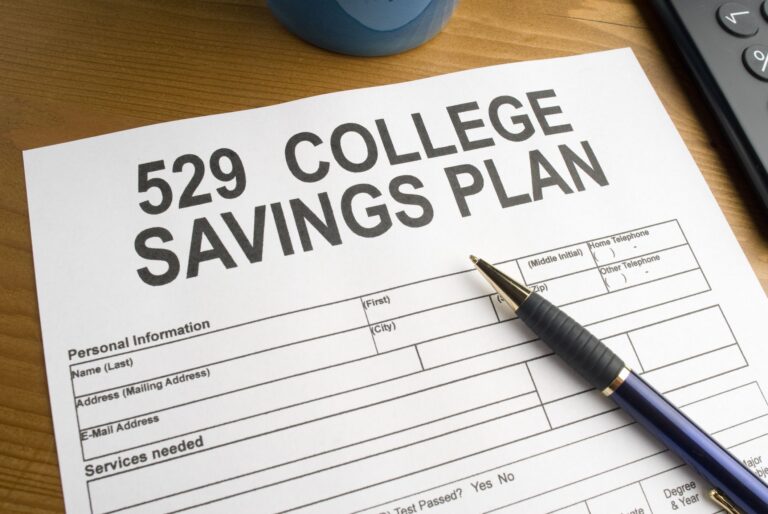What Types of Schools Can be Paid for With a 529 Plan?
As the cost of education continues to rise, parents and guardians are always on the lookout for ways to save money and secure their child’s future. One such option is the 529 plan, a tax-advantaged savings plan designed to help families save for education expenses. While it may seem straightforward, it is essential to know which types of schools can be paid for with a 529 plan to maximize its benefits fully.
In this article, we will dive into the different types of schools that can be paid for with a 529 plan, what expenses are considered eligible, and the contribution limits and tax benefits of the plan.
529 Eligible Schools
The first thing to understand is that not all schools are eligible for payment using a 529 plan. The Internal Revenue Service (IRS) outlines the criteria for eligible educational institutions, which include accredited colleges and universities, vocational schools and trade schools, and K-12 private schools. Even student loans that have been taken out to pay for these types of schools are eligible to be paid back with 529 funds!
Accredited Colleges and Universities
Accredited colleges and universities are the most popular option for 529 plans. The definition of an accredited institution is one that has met specific educational standards set by accrediting agencies recognized by the Department of Education. Examples of accrediting agencies include the Middle States Association of Colleges and Schools, the Higher Learning Commission, and the New England Association of Schools and Colleges.
Vocational Schools and Trade Schools
Vocational schools and trade schools are another type of eligible school that can be paid for using a 529 plan. These institutions offer specialized training and education in fields such as nursing, healthcare, technology, and construction. Examples of vocational schools include the Culinary Institute of America, the International Yacht Restoration School, and the New England Institute of Technology.
K-12 Private Schools
In 2017, the Tax Cuts and Jobs Act expanded the use of 529 plans to include K-12 private schools. This means that parents and guardians can use a 529 plan to pay for tuition expenses at private elementary, middle, or high schools. However, there is a limit of $10,000 per year for K-12 expenses, and not all states have adopted this provision (as you can see below).
529 Ineligible Schools
While there are several types of eligible schools for 529 plans, some institutions are not eligible for payment using the plan. It is crucial to understand which schools are not eligible to avoid any potential issues with the IRS.
International schools, whether they are located outside the United States or within the country, are not eligible for payment using a 529 plan. These schools may not meet the criteria set by the IRS for eligible educational institutions, such as accreditation standards.
While K-12 private schools are eligible for payment using a 529 plan, religious schools are not eligible if the funds are being used for religious purposes. This is because the IRS prohibits the use of 529 funds for religious purposes or activities, including religious education.
In certain states, K-12 education expenses are not eligible for payment using a 529 plan, even if they are allowed in other states. Since K-12 education was just allowed via the 2017 Tax Cuts and Jobs Act, some states may just be slow in adapting to the new rules. However, as of this writing, the states that do not see K-12 education expenses as a valid 529 qualified expense are:
- California
- Colorado
- Hawaii
- Illinois
- Michigan
- Minnesota
- Montana
- Nebraska
- New Mexico
- New York
- Oregon
- Vermont
529 Qualified Expenses
Now that we understand which schools are eligible for payment using a 529 plan, it is essential to understand what expenses are considered qualified. Qualified expenses include tuition and fees, room and board, required books and supplies, and computer or peripheral equipment or internet access expenses. However, the most commonly use for 529 funds include:
Tuition and fees are the most commonly paid expenses using a 529 plan. These expenses include the cost of courses, registration fees, and other mandatory fees that are required for enrollment.
Room and board are also considered qualified expenses. The cost of on-campus or off-campus housing, including rent, utilities, and meal plans, can be paid for using funds from a 529 plan.
Required books and supplies, such as textbooks, course materials, and equipment necessary for attendance at the school, can be paid for using a 529 plan. This includes expenses such as laptops, calculators, and lab coats.
Expenses In 2020, the CARES Act expanded the definition of qualified expenses to include computer or peripheral equipment or internet access expenses. This means that families can use their 529 plan funds to purchase computers, laptops, printers, and other technology required for the student’s education.
Finally…
Contributions to a 529 plan are made with after-tax dollars, which means that the money is taxed before it is contributed to the plan. However, the earnings in the plan grow tax-free, and withdrawals made for qualified education expenses are also tax-free. In addition, some states offer state income tax deductions or credits for contributions made to a 529 plan.
A 529 plan is a valuable tool for families looking to save for education expenses. However, it is crucial to understand which types of schools are eligible for payment, what expenses are considered qualified, and the contribution limits and tax benefits of the plan. By utilizing a 529 plan, families can save for education expenses while taking advantage of tax benefits and ensuring that their child’s future is secure.






